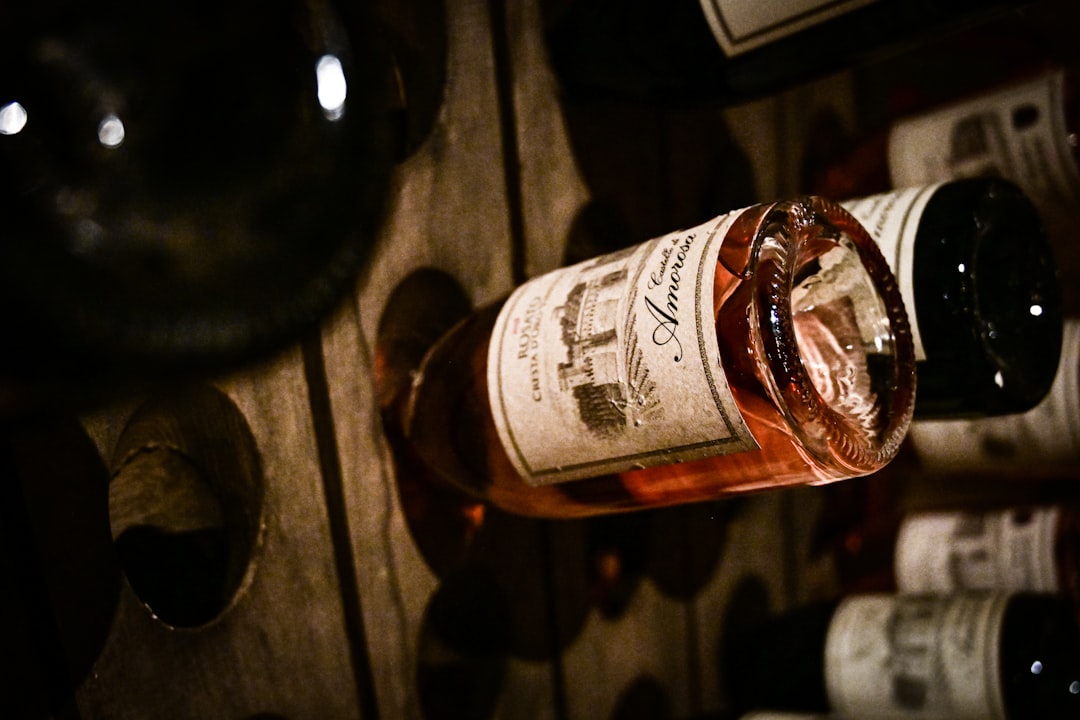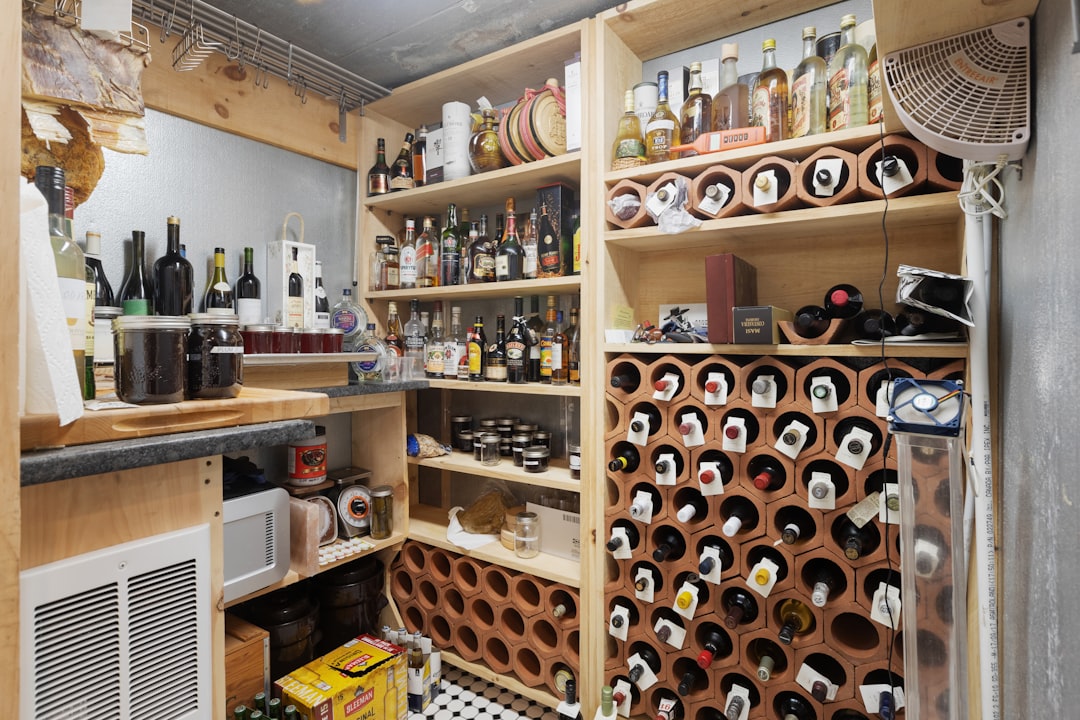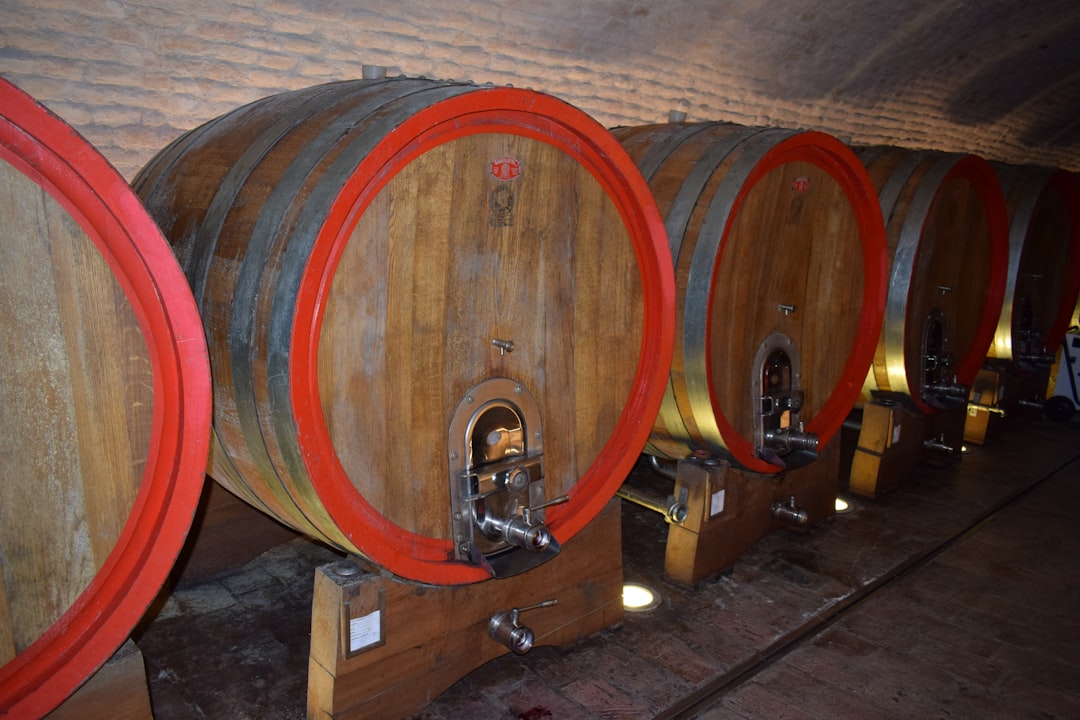

Engage prospects with a scan and streamline customer engagement with FREE QR code marketing tools by Sona – no strings attached!
Create a Free QR CodeFree consultation

No commitment

Engage prospects with a scan and streamline customer engagement with FREE QR code marketing tools by Sona – no strings attached!
Create a Free QR CodeFree consultation

No commitment
In today’s digitally driven world, QR codes have evolved from a novelty to a strategic powerhouse in bridging offline engagement with online action. For wine cellars, QR codes represent a frictionless, elegant way to unlock richer storytelling, smarter service, and measurable marketing performance without an app download or complex onboarding. Guests can scan from a wine label, a shelf talker, or a tasting mat in seconds, then step into an experience that feels curated and timely.
As packaging and presentation become as important as provenance, QR codes let you connect the tactile beauty of bottles and cellar spaces with dynamic digital journeys. You can guide visitors from a glance at a label to tasting notes, from a climate-unit box to maintenance records, or from an event placard to a VIP membership offer. The result is a connected experience that respects tradition while capitalizing on modern expectations for instant access, personalization, and follow-through.

Wine cellars frequently miss valuable client signals when high-intent prospects browse labels or installations, then leave without sharing contact information. Even in beautifully designed spaces, the lack of a simple digital bridge means interest goes untracked, and an opportunity to deepen the relationship is lost. QR codes solve this by turning every physical touchpoint into a digital conversation starter that captures intent and routes it to the right next step. See Sona QR in marketing for examples.
Start by aligning QR use cases to concrete business outcomes: faster post-tour follow-up, higher event feedback rates, smoother maintenance tracking, and easier reorders or consultations. Then define success metrics such as scan-to-action rates, form completion percentages, and the number of qualified leads captured per event. Replace analog friction points with QR-powered journeys that automatically enrich your CRM, see Sona QR overview, and trigger timely outreach.
For example, when a luxury cellar integrates QR-enhanced labels, teams can see which vintages attract the most scans during a private tasting, which guests explore renovation services afterward, and who returns to the QR-driven gallery from home. This behavior signals purchase intent, enabling sales to offer personalized recommendations or a complimentary consultation while interest is fresh. And yes, Sona QR is built to support every step of this transformation.

Traditional wine cellar experiences are tactile, intimate, and visually rich; however, they often end with minimal follow-through because interest remains invisible without a clear bridge to digital action. This offline-to-online gap leaves marketers and sales teams guessing about who engaged with what, when, or why. QR codes remove the guesswork by creating immediate paths from physical curiosity to digital commitment.
QR codes also meet modern expectations for speed and simplicity. Guests do not want to search a website for tasting notes, juggle paper brochures, or remember to email the showroom after a tour. A single scan dispenses with friction and directs the visitor to exactly the next step you want them to take, whether that is joining a club waitlist, downloading a cellar design guide, or saving a vCard. For how QR labels inform preferences, see QR labels and data.
Imagine a showcase cellar using QR-enabled labels to share provenance details, sustainability practices, and animated build tours. Each scan can trigger follow-up messaging calibrated to the guest’s demonstrated interests, helping convert browsers into club members or design clients with minimal added overhead.

Wine cellars serve multiple audiences at once: collectors, trade buyers, architects, and hospitality teams. Each audience needs a different outcome from a scan. The right QR format makes it easy to route people to the right experience without adding friction.
While you can generate many types of QR codes, a few formats consistently deliver in the cellar environment. Prioritize formats that capture data, streamline service, and convert interest into revenue opportunities, all while respecting the setting’s aesthetic standards.
Dynamic QR codes are especially valuable in this vertical, since you can centralize control of destinations and analytics. As campaigns evolve, you can swap links, target content by location or time, and measure performance without changing the printed assets already deployed. With Sona QR, you can manage all formats and edits in one place, then sync scan activity to your CRM.

Wine cellar businesses often cannot see who is engaging with which part of the experience, so potential upsells, cross-sells, and renewals slip away. Strategic QR placement can surface intent that would otherwise remain hidden, turning passive interest into qualified, trackable demand.
Map your typical buying journey and place QR codes in moments where curiosity peaks or decisions need support. Offer a clear benefit with every code, then measure which placements generate the most valuable actions. Use that insight to refine your marketing mix and prioritize the channels that move revenue.
For instance, an event organizer can place QR codes on tasting mats to tie impressions to contact records, revealing preferences in real time. That data enables personalized follow-up, such as a curated allocation of similar vintages or an invitation to a members-only installation showcase.

In a high-touch environment like a wine cellar, many signals of readiness to buy or expand are subtle. QR codes make these signals visible, actionable, and attributable. With careful orchestration, you can transform each scan into a richer profile and a clearer path to value.
Start with a handful of use cases that anchor your core goals: education, service, and conversion. Make each QR destination short and compelling, and ensure it feeds data back into your CRM with context tags that illuminate both interest and urgency.
Each use case converts previously invisible interest into CRM-connected insight. Over time, you will spot patterns, such as which visitors repeatedly scan climate-unit packaging or which vintages are the strongest predictors of club upgrades. That knowledge guides smarter investment and more tailored outreach.
Every scan is a micro-conversion that reveals intent, context, and timing. By deploying unique QR codes across journey stages, you turn a stream of individual scans into structured audiences you can retarget with precision. The key is to tag and sync data in real time so marketing and sales can respond while interest is high. See Sona’s retargeting playbook.
Begin by mapping your lifecycle stages, then assign distinct QR codes to awareness, consideration, and conversion assets. Add attributes to each code that describe placement, goal, and content category. This allows you to build dynamic segments that power email, SMS, and paid retargeting automatically.
In practice, this means your team can greet a high-fit prospect with relevant content at each step: a follow-up email with their top-rated varietals after a tasting, a design consult offer after a gallery scan, and maintenance plan options after an equipment registration. The result is a journey that feels bespoke and timely.
QR codes act as connective tissue between your physical presence and your digital ecosystem. When your brochures, signage, events, and packaging all feed into one data pipeline, you gain a unified view of performance that reveals what truly drives sales and satisfaction. For measurement clarity, review Sona’s take on multi-touch attribution.
Use QR codes to simplify the jump from inspiration to action across channels. Then centralize analytics so you can see which placements and messages generate discovery, which spark consideration, and which close the loop with booking or purchase. With Sona QR, you can manage codes, monitor scans, and sync data with your CRM to inform budget allocation and creative direction.
In wine cellars and showrooms, print and environmental media carry much of the storytelling load. QR codes make those stories interactive and measurable, giving you the clarity to invest where attention turns into action.
Many wine cellars see limited returns from QR initiatives because the use cases do not map to real customer friction. This checklist helps you design campaigns that capture genuine intent, connect to clear outcomes, and scale with reliable data. Start small, iterate quickly, and build a library of high-performing placements over time.
Before you begin, align on a single north-star metric for the campaign, such as consultation bookings or event feedback collected. Design every element of the QR experience to drive that outcome, from the call to action on the sign to the clarity of the landing page and the speed of follow-up.
Define your campaign goal and tie it to a measurable outcome. For example, “Capture 100 RSVPs for a reserve tasting,” “Reduce service call time by 20 percent through QR-driven maintenance logs,” or “Book 30 design consultations from catalog scans.” Keep the use case focused so you can test and iterate.
Select static QR codes for fixed, evergreen resources such as a cellar care PDF. Choose dynamic QR codes for campaigns that need tracking, retargeting, or the flexibility to change destinations without reprinting.
Your code must be scannable and visually aligned with your brand. Add a logo, choose brand-safe colors with strong contrast, and frame the code with a concise CTA such as “Scan for tasting notes.”
Roll out QR codes where your audience already engages. In wine cellars, this often includes bottle labels, tasting mats, feature plaques, installation packaging, showroom signage, and direct mail to VIPs.
Use Sona QR to monitor scans by time, location, and device, then link those scans to outcomes such as bookings, sales, or survey completions. Identify drop-off points and test improvements continuously.
Measuring the impact of physical marketing has long been a challenge for wine cellars. Without integrated analytics, it is hard to know which placements or messages move the needle, and even harder to attribute revenue to specific touchpoints. Modern tools solve this by pulling scan data into a single view and tying it to pipeline progression, so you can invest with confidence.
Sona QR and Sona.com work together to capture granular scan data and connect it to business outcomes. Instead of stopping at the scan, you can follow the journey through form fills, follow-up calls, and closed deals, then see which QR placements and offers contributed to revenue. This brings performance marketing rigor to your physical environment. Review Sona’s offline attribution guide.
The outcome is a clear line of sight from scan to revenue. Instead of guessing, you can see which vintages, features, or placements signal readiness to buy, upsell, or renew, and you can allocate budget accordingly.
To scale QR impact, focus on clarity, context, and continuity. Clarity ensures guests know why to scan. Context aligns the code with the moment of need. Continuity connects scans to immediate follow-up that moves the relationship forward. This trio turns QR from a novelty into a growth system.
Start by standardizing how you create, label, and measure codes so lessons compound across campaigns. Then invest in training staff and partners to promote scanning benefits, not just the existence of a code. The human touch helps overcome hesitation and primes visitors for a better digital experience.
As your program matures, expand to advanced tactics such as localized dynamic destinations, progressive profiling on forms, and audience-specific content sequencing. You can generate and track your first QR codes for free with Sona QR. Start creating QR codes for free.
The modern wine cellar balances heritage and innovation. QR codes help resolve a core tension in that balance: how to maintain a refined, tactile experience while capturing the data and momentum needed to grow. With thoughtful design and placement, every bottle, shelf, and event asset becomes a digital entry point that invites action, gathers insight, and fuels intelligent follow-up.
The value extends beyond engagement. QR codes create a connected journey that advances prospects from awareness to consultation to membership, while analytics reveal where to invest and how to refine. With Sona QR, you can capture demand at the source. With Sona, you can attribute that demand to revenue and optimize your marketing like a performance program, not a guessing game.
By embracing QR codes across packaging, signage, and event touchpoints, wine cellars can systematically convert interest into long-term value. The result is a seamless blend of physical elegance and digital intelligence: an experience that delights guests, empowers teams, and drives measurable, sustainable growth.
QR codes have revolutionized the wine cellar industry by transforming traditional wine packaging into interactive, engaging experiences that drive customer acquisition and deepen brand loyalty. By embedding dynamic QR codes on wine labels and cellar displays, wineries can offer immersive storytelling, tasting notes, and exclusive offers that turn casual buyers into passionate enthusiasts. Imagine customers effortlessly accessing rich content and personalized recommendations right from the bottle, enhancing their appreciation and connection to your brand.
With Sona QR, creating and managing these dynamic, trackable QR codes is effortless. Instantly update campaigns without the need to reprint labels, monitor engagement in real time, and link every scan directly to sales performance. This means no missed opportunities and a clear understanding of which packaging innovations truly captivate your audience. Start for free with Sona QR today and transform every bottle in your cellar into a powerful marketing asset that drives growth and customer loyalty.
QR codes in wine cellars enable guests to quickly access curated digital content such as tasting notes, event RSVPs, and membership offers, turning physical touchpoints into interactive, personalized experiences that capture customer intent and enable timely follow-up.
Using QR codes on wine bottle labels provides instant access to tasting notes, provenance, food pairings, and cellar care tips, increases engagement, strengthens brand affinity, and generates qualified leads for high-end services like private tours or club memberships.
Dynamic QR code labels allow wineries to update content such as seasonal tasting menus or event calendars without reprinting, track scan data to understand consumer interests, and tailor marketing efforts that influence preferences by delivering timely and relevant information.
Scanning a QR code on a wine bottle can provide tasting notes, provenance details, food pairing suggestions, cellar care instructions, event invitations, membership offers, and options to request private tours or consultations.
Wineries use QR codes integrated with CRM systems to capture scan data and customer preferences in real time, enabling personalized follow-ups such as tailored recommendations, exclusive offers, and timely outreach that enhances the guest journey from awareness to purchase.
Use Sona QR's trackable codes to improve customer acquisition and engagement today.
Create Your FREE Trackable QR Code in SecondsJoin results-focused teams combining Sona Platform automation with advanced Google Ads strategies to scale lead generation

Connect your existing CRM

Free Account Enrichment

No setup fees
No commitment required

Free consultation

Get a custom Google Ads roadmap for your business






Launch campaigns that generate qualified leads in 30 days or less.
